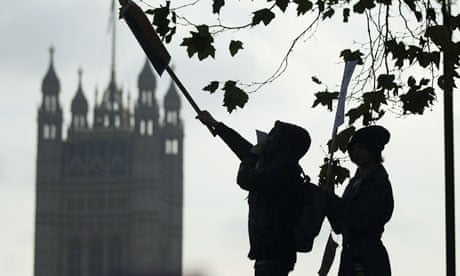After two chaotic student protests in the space of a fortnight, the question police will be asking is: who are the new rebel leaders? The unfortunate answer for them is that there are none.
Unlike student movements of the 1960s and 1970s, actions developed organically, with social media, particularly Facebook and Twitter, providing an ideal platform for grassroots organisation.
This has left police with little idea of what to expect, as shown during the first demonstration when just 225 officers were initially assigned to contain what turned out to be tens of thousands of protesters in central London.
Before the action today, Scotland Yard appealed for protest groups to contact them with their plans but they had received almost no response – for the most part because there were no plans.
Police forces elsewhere in the country faced a similar problem. Some journalists tried to expose student "ringleaders" posting messages on blogs; largely, they got it wrong, for while politically active, few, if any of the writers, were encouraging people to be violent.
Chief among those identified was Clare Solomon, president of the University of London Union, the largest and arguably most radical student union. Solomon's group is broadly aligned with Counter Fire, a leftist group that split from the Socialist Workers party and which might number 200 at most. Solomon led the London march early today with a megaphone but found her directions overruled when students, instructed via mobile phones, spontaneously sprinted toward parliament.
The so-called "block" of anarchists attached to the demonstrations appears to be growing, however, and masked figures were, as with the storming of Conservative headquarters in Millbank in the first protest, at the forefront of the action.
By contrast, most of those with an official association with the National Union of Students were absent.
The crowd in London consisted mainly of youngsters who seemed to have no obvious direction but a great deal of anger. While they left unlawful action, notably the vandalising of a police van near Parliament Square, to teenage boys, many others stood by and cheered.



